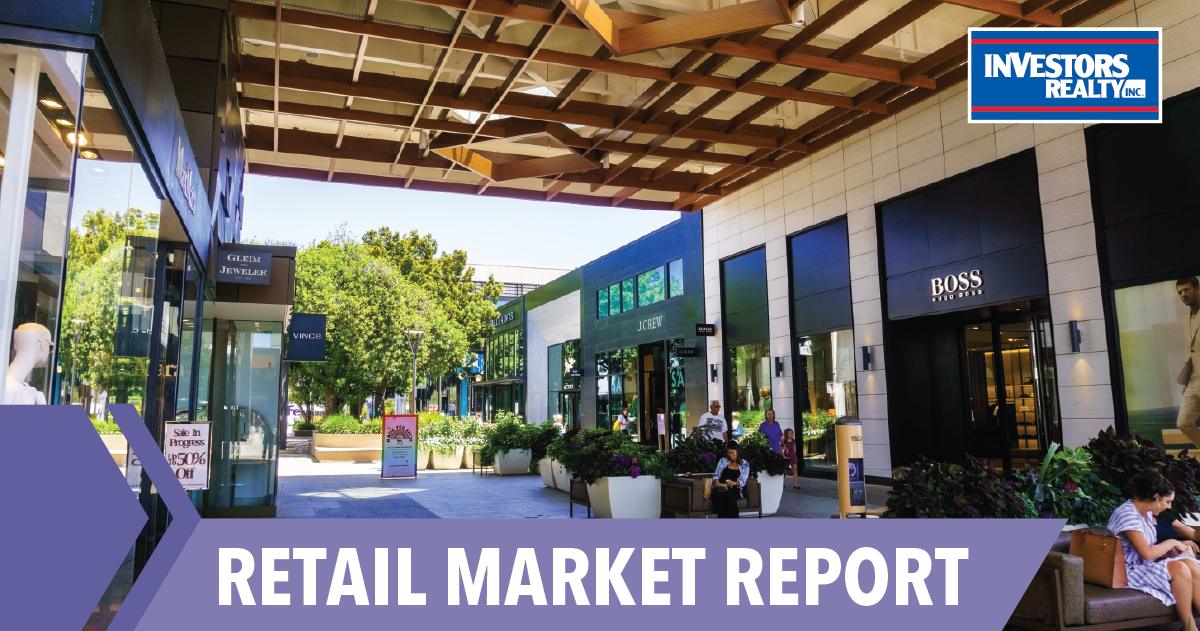Climbing to a rate of 7% in late 2021, the U.S. inflation rate is the highest it has been since 1982. The biggest driver of the increase is gas prices, followed by homes, food and cars.
Pressures such as pandemic-induced supply constraints, increased energy costs, labor shortages and increasing consumer demand have all contributed to this historic inflation. The Fed also announced they would do what is necessary to contain it, including increasing interest rates in 2022. That kind of statement sticks in the minds of investors and developers when deciding when to pull the trigger on new projects.
Despite the pressures and increased costs, consumers are still spending. Omaha’s retail sector has shown resilience. Consumers are returning to stores as vaccination rates increase and operations have normalized. Sales have returned to pre-pandemic levels or better. The number of retailers filing for bankruptcies has declined to a five-year low, while openings are currently on pace to exceed closures for the first time since 2016.
Omaha’s low cost of living, a tight labor market, and wage growth have provided consumers with disposable income. As consumers have returned to stores, so too have investors. According to CoStar’s 2021 Omaha Retail Market Report, the combination of confidence in the retail sector and low interest rates has resulted in $404 million of retail property sales recorded over the trailing 12 months, an all-time high for the metro. While investors continue to heavily target single-tenant, net-lease deals with credit tenants, the market has recently experienced an uptick in multi-tenant retail assets. And we are seeing cap rates falling in many sectors, including retail.
This activity has kept our retail team busy, but it is worth noting that what is keeping us busy has changed over time. Speculative construction of multi-tenant retail strip centers in Omaha seems nonexistent. The combination of increased ground cost, increased construction cost and much of the tenancy in small shop retail being local has put the rents out of reach. Much of the new construction we are seeing is owner-operator driven. Much of the sale activity is in the ground and investment sale arena. And much of the leasing is being done on a pre-lease/build-to-suit basis, or absorption of existing inventory.
Many of the buildings that, for a decade, have had problematic vacancy, are being pushed to 100% occupancy. This upward trend is helping bolster and increase retail rents of existing product. We speculate much of this is driven simply by the increased cost of anything new. In many cases, the cost to rent in new construction buildings is almost double that of existing buildings. The cost of interior finishing has increased dramatically – as much as 30% or more – so there is a fight to find space with existing finishes.
As a retail team, we are cautiously optimistic. In times like these, we always look to the past to indicate the future. New highs have begun to feel like a regular occurrence. Many of the prices we are seeing are breaking the boundaries of what we thought was achievable. While this is good for business, the market is also taking on the appearance of overheated markets we have seen crumble in the past. We, of course, hope this is not the case!
For additional details on the retail market, please click click here.
This article appeared in our company newsletter in March of 2022. Please click here to download the entire newsletter.



